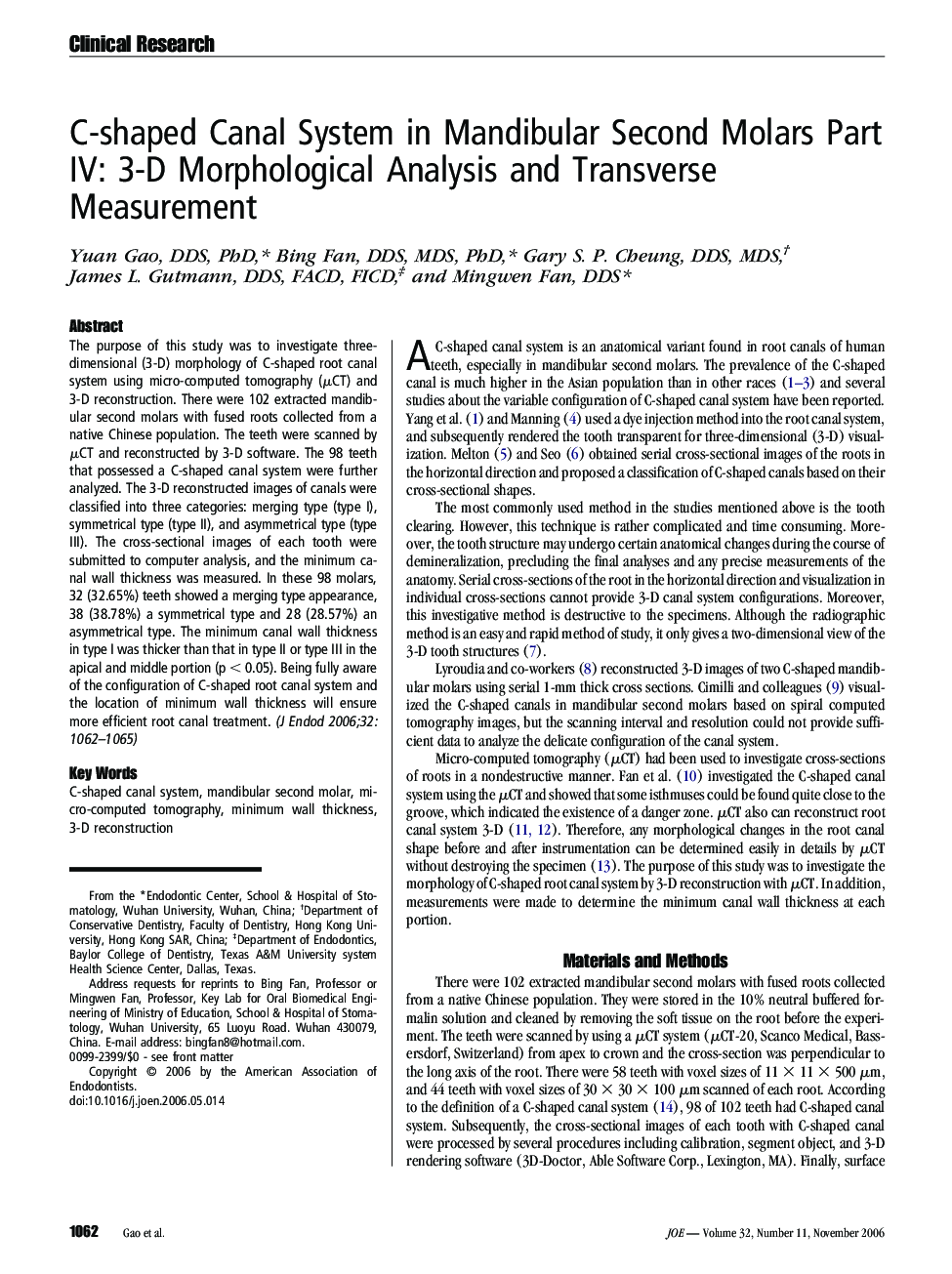| Article ID | Journal | Published Year | Pages | File Type |
|---|---|---|---|---|
| 3150068 | Journal of Endodontics | 2006 | 4 Pages |
The purpose of this study was to investigate three-dimensional (3-D) morphology of C-shaped root canal system using micro-computed tomography (μCT) and 3-D reconstruction. There were 102 extracted mandibular second molars with fused roots collected from a native Chinese population. The teeth were scanned by μCT and reconstructed by 3-D software. The 98 teeth that possessed a C-shaped canal system were further analyzed. The 3-D reconstructed images of canals were classified into three categories: merging type (type I), symmetrical type (type II), and asymmetrical type (type III). The cross-sectional images of each tooth were submitted to computer analysis, and the minimum canal wall thickness was measured. In these 98 molars, 32 (32.65%) teeth showed a merging type appearance, 38 (38.78%) a symmetrical type and 28 (28.57%) an asymmetrical type. The minimum canal wall thickness in type I was thicker than that in type II or type III in the apical and middle portion (p < 0.05). Being fully aware of the configuration of C-shaped root canal system and the location of minimum wall thickness will ensure more efficient root canal treatment.
